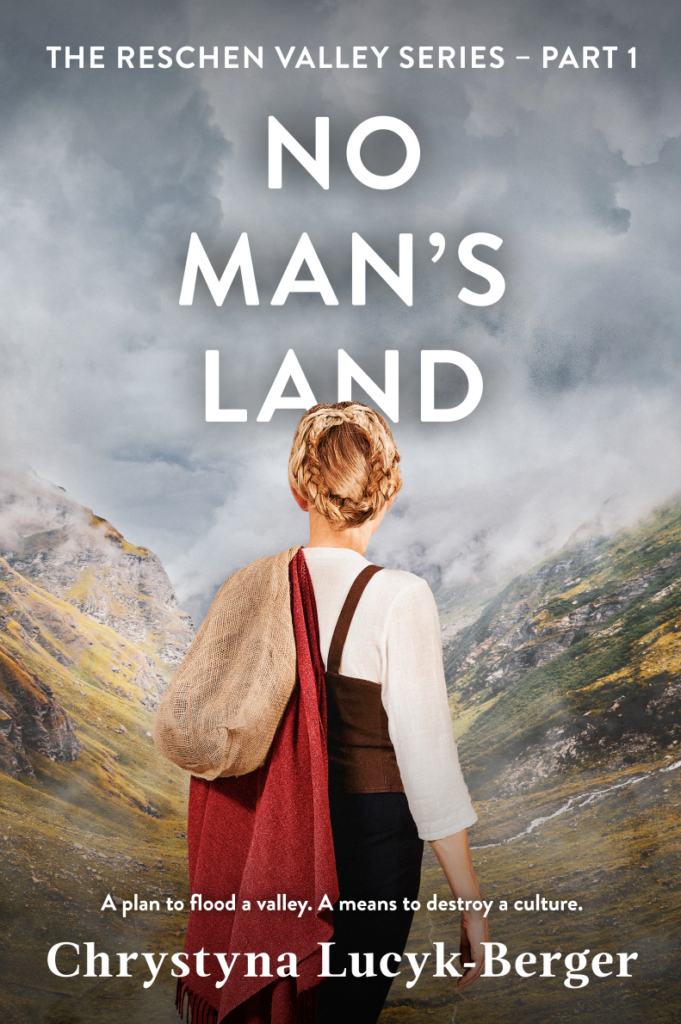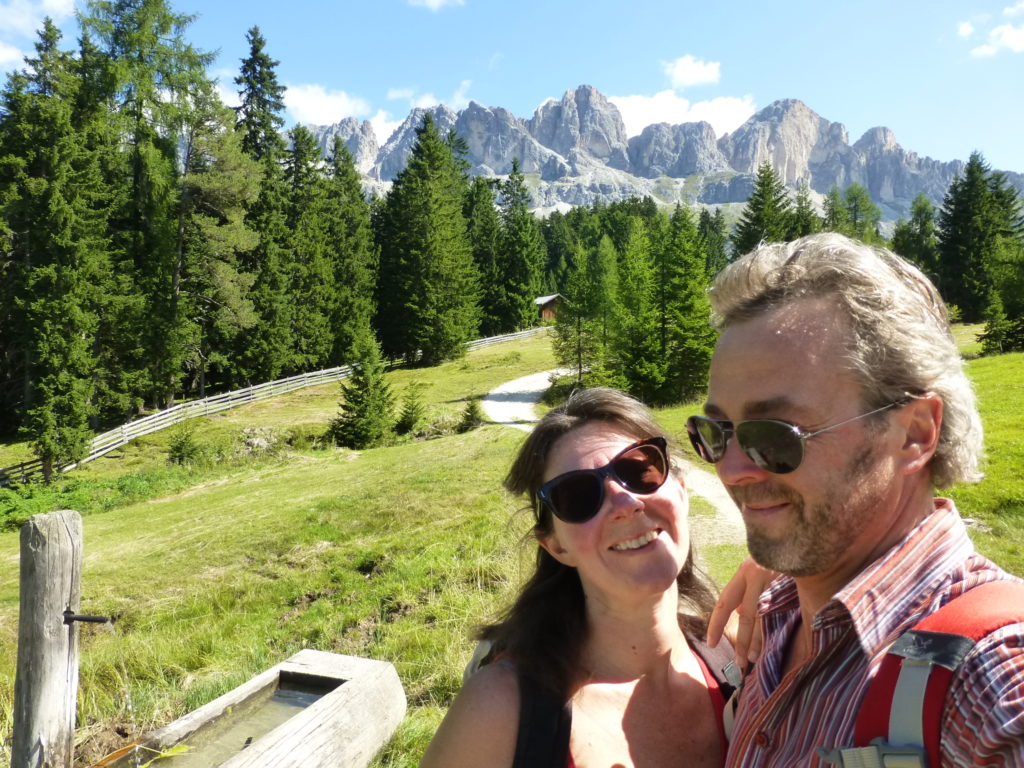In this two-part series, we’re going to take you on a hike through the Italian Dolomites in South Tyrolean territory. In our post in July, we’ll give you a list of the museums dedicated to bringing the region’s war stories up close and personal. Virtual tours, movies and live webcams in the links below!

Setting the Scene
In 2015, my husband and I stayed in Welschnofen for a week-long excursion of hiking. We were out and about for 6 to 7 hours a day in some of the most breathtaking alpine landscapes I’ve seen… and I’ve seen a lot.
The Dolomites are an absolute mecca for outdoor enthusiasts. Hiking, of course, rates as activity number one: from short, flat walks following perhaps one of Sissi’s many walking routes (of the last Habsburgs) to challenging hikes with significant elevation changes the kind that locals Luis Trenker and Reinhold Messner could scale. From day hikes to multi-day excursions, the Dolomites offer a wide variety of options for all skill levels.
Best of all, if you are a history buff like I am, you will get an intriguing, up-close-and-personal look at the battlegrounds from WW1 and WW2. Hiking across rocky ridges and idyllic meadows to picturesque mountain huts, one can trace the dramatic wartime history of this place that served as the Austrian–Italian frontline during World War I.
For WW1 and WW2 History Buffs
In 1914, before the war broke out, the Trento, Tyrol, and Ladin valleys of the Dolomites belonged to the Austro-Hungarian Empire. On May 23, 1915, Italy was fueled by rising nationalism, and launched a military campaign to annex these regions, particularly those inhabited by Italian-speaking people.
A 370-kilometer battle line ran through the Dolomites and the high passes became the setting for the fiercest and most treacherous battles of WWI. High altitude and severe winter temperature made trench warfare particularly deadly.

Only about one-third of the 150,000 men who died on the Alpine front were victims of battle; the rest were killed by avalanches, landslides, frostbite, and illnesses caused by the extreme cold.
Working in brutal conditions, Italians and Austro-Hungarians alike levelled peaks, opened roads, dug tunnels, built cableways, laid telephone lines, and transported tons of material to lofty heights—for combat, but also for the everyday needs of the thousands of soldiers who were living year-round at altitudes where only shepherds, wild herb hunters, and mountain climbers had ever ventured. The Italian and Austrian armies built bunkers, entire shack villages, though officers generally lived in old mountain refuges. On the Marmolada, the highest mountain in the Dolomites, the Austrian Corps of Engineers built an entire “ice city”—a complex of tunnels, dormitories, and storerooms dug out of the bowels of the glacier.

In the first book of the Reschen Valley series, No Man’s Land, Angelo Grimani is a veteran of the first World War and an engineer. He recalls his battles on the Marmolada. The Austro-Hungarians were only one enemy. Others included the elements, the poorly-informed commanding officers, and the dangerous projects such as “blowing the whole of the Marmolada sky high”.
Luis Trenker, a South Tyrolean alpinist and filmmaker, also made one of the most famous films about the battles in the Dolomites, Der Berg Ruft (The Mountain Calls). You can watch it on YouTube in its entirety. Although it’s not in English, you will see scenes of what life was like. It’s an excellent story that depicts the friendship between one Italian and one South Tyrolean before Italy joins the war.
Der Berg ruft!
The Mountain Calls!
The South Tyrolean is the Italian’s mountain guide; they’ve known one another for years as the Italian makes annual holidays to climb the mountains. When war breaks out, they face one another on the battlefield. The ending is fantastic. It truly is one of the best movies I’ve ever seen on the subject. Besides illustrating the most amazing stunt photography for the era, the skiing scene inspired Angelo’s dream scene in No Man’s Land.
Today the tunnels, trenches, barbed wire, gun placements, and cableways remain as a stark reminder of this deadly battlefront. And visiting these battle sites and the Great War Museum is a highlight on any Dolomites hiking tour. We’re going to cover those in part 2 of this series.
For the Outdoor Enthusiast: If you’re serious about a trip here…


If you do go it alone, the best tip I can offer you is to combine your hike(s) with transportation by gondola so you can cover more ground without over-exerting yourself. Many of mountain huts are also accessible by gondola, so you can catch a ride to the top for an overnight and can continue hiking from there.

And if you are coming, do let us know. If I can, I’m more than happy to meet a reader in person. Maybe even give you a guided tour!
References
Featured image and photos by Chrystyna Lucyk-Berger unless stated otherwise
Get the Box Set Season 1: 1920 – 1924




